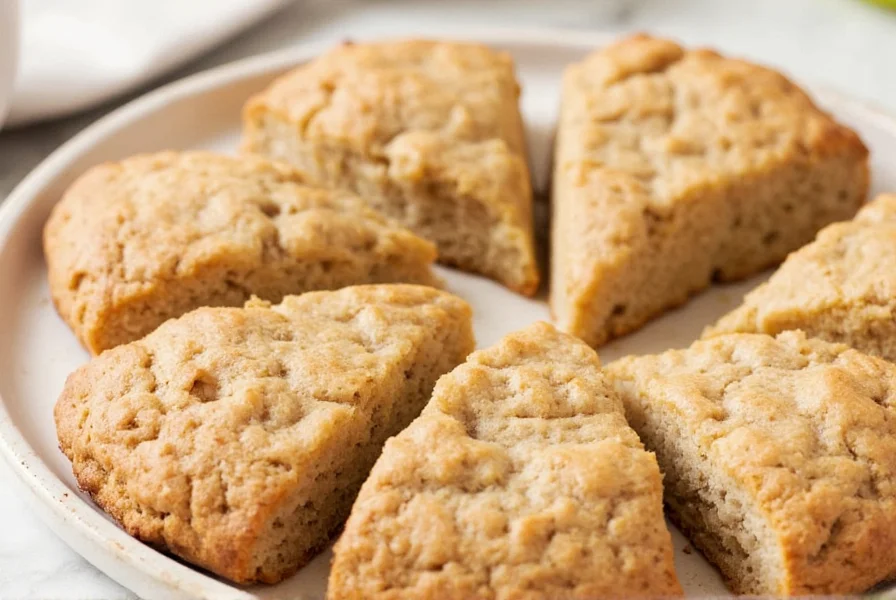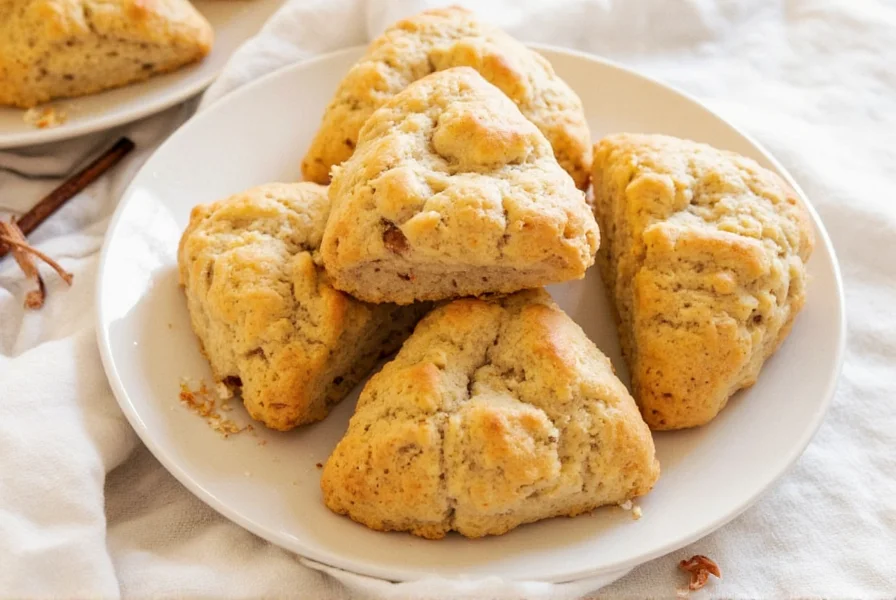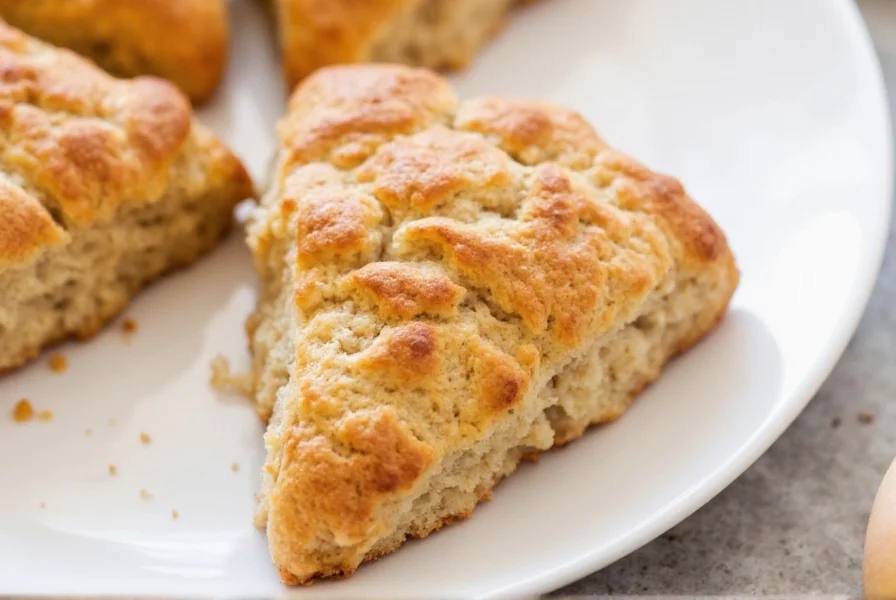Apple cinnamon scones represent the ideal autumn breakfast treat, merging the natural sweetness of apples with warm cinnamon spice in a tender, flaky pastry. Unlike many recipes that produce dry or overly sweet results, this perfected version delivers consistent texture and balanced flavor through precise ingredient ratios and technique. The key lies in maintaining cold butter throughout preparation and using just enough liquid to bind ingredients without overworking the dough.
Why This Apple Cinnamon Scones Recipe Works
Most home bakers struggle with scones that turn out either too dense or crumbly. Our tested recipe addresses these common issues through three critical elements: the 3:1 flour-to-fat ratio ensures proper structure, the dual-leavening system (baking powder plus cream's acidity) creates optimal rise, and the strategic apple placement prevents sinking. Fresh Granny Smith apples provide the perfect tartness to balance the cinnamon without making the dough too wet.
| Ingredient | Measurement | Key Notes |
|---|---|---|
| All-purpose flour | 2 cups (250g) | Spoon and level method for accuracy |
| Cold unsalted butter | 1/2 cup (113g) | Cut into 1/4" cubes, chilled |
| Fresh apples | 1 cup diced (150g) | Granny Smith recommended |
| Heavy cream | 1/2 cup (120ml) | Cold, plus extra for brushing |
| Brown sugar | 1/3 cup (75g) | Packed for consistent sweetness |
| Cinnamon | 1 tbsp | Freshly ground preferred |
Step-by-Step Baking Instructions
Begin by preparing your ingredients: dice apples into 1/4-inch pieces and chill all components. In a large bowl, whisk together flour, baking powder, salt, brown sugar, and cinnamon. Cut cold butter into the dry ingredients using a pastry cutter until pea-sized crumbs form. Gently fold in diced apples, being careful not to break down the butter pieces.
Create a well in the center and pour in cold cream. Using a rubber spatula, mix with 8-10 swift strokes until just combined - the dough should appear shaggy with visible butter streaks. Turn onto a lightly floured surface and gently shape into a 1-inch thick circle without overworking. Cut into 8 wedges using a sharp knife.
Place scones on a parchment-lined baking sheet, brush tops with additional cream, and sprinkle with coarse sugar. Bake at 400°F (200°C) for 15-18 minutes until golden brown and a toothpick inserted comes out clean. Cool on a wire rack for 10 minutes before serving.

Pro Techniques for Flawless Results
Professional bakers achieve consistent scone success through temperature control and minimal handling. Keep all ingredients cold - even chill your bowl and pastry cutter beforehand. When cutting butter into flour, stop when pieces reach pea-size; larger chunks create steam pockets during baking that yield flakiness. Never knead scone dough like bread - overmixing develops gluten and creates toughness.
For optimal apple distribution, toss diced fruit with 1 tablespoon of the measured flour before folding into the dough. This prevents sinking during baking. If your kitchen runs warm, refrigerate the shaped scones for 15 minutes before baking to reset the butter's temperature.
Troubleshooting Common Issues
Dry, crumbly scones: Typically caused by overmixing or insufficient liquid. Measure cream precisely and mix only until ingredients come together. If dough appears too dry, add cream 1 teaspoon at a time.
Flat, dense scones: Usually indicates melted butter or expired leavening. Ensure butter remains cold throughout preparation and test baking powder freshness (it should bubble vigorously in hot water).
Soggy bottoms: Results from excess moisture in apples. Pat diced apples dry with paper towels before adding to dough, and avoid overfilling scones with fruit.

Serving and Storage Recommendations
Apple cinnamon scones taste best served warm within 2 hours of baking. Pair with clotted cream and apple butter for an authentic experience, or enjoy with a simple dusting of powdered sugar. For storage, keep in an airtight container at room temperature for up to 2 days. Freeze unglazed scones for up to 3 months; thaw and reheat at 325°F for 8-10 minutes.
Variations for Dietary Preferences
For a gluten-free version, substitute with 2 cups of quality gluten-free flour blend and add 1/2 teaspoon xanthan gum. Vegan bakers can replace butter with chilled coconut oil and use full-fat coconut cream. Reduce sugar to 1/4 cup for a less sweet option that better highlights the apples' natural flavor.
Frequently Asked Questions
Can I use frozen apples in apple cinnamon scones?
Yes, but thaw completely and pat dry to remove excess moisture. Frozen apples release more liquid during baking which can make scones dense. For best results, use fresh apples as their firmer texture holds shape better during baking.
Why did my apple cinnamon scones spread too much?
Excessive spreading usually indicates butter that was too warm during preparation. Always use cold butter and work quickly to maintain its temperature. Chilling the shaped scones for 15 minutes before baking helps them hold their shape better in the oven.
How can I make my apple cinnamon scones more moist?
For moister scones, increase cream by 1-2 tablespoons or add 1 tablespoon of apple sauce to the dough. Avoid overbaking - remove when a toothpick comes out with moist crumbs, not completely clean. Letting scones cool properly on a wire rack prevents trapped steam from making them soggy.
What's the best apple variety for cinnamon scones?
Granny Smith apples provide the ideal balance of tartness and firm texture that holds up during baking. Honeycrisp offers a sweeter alternative with good structure. Avoid softer varieties like Red Delicious which become too mushy. For complex flavor, combine half Granny Smith and half Braeburn apples.











 浙公网安备
33010002000092号
浙公网安备
33010002000092号 浙B2-20120091-4
浙B2-20120091-4